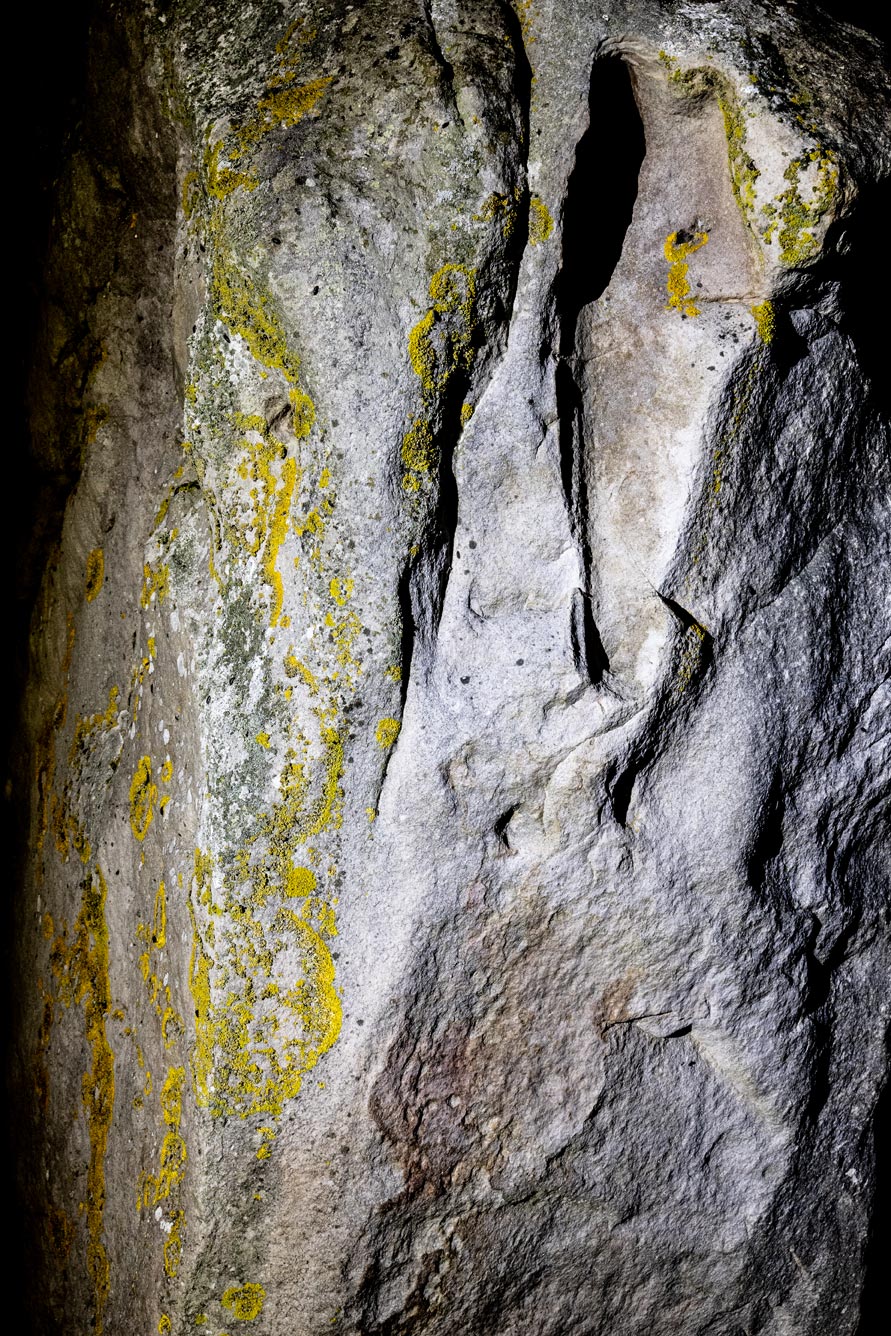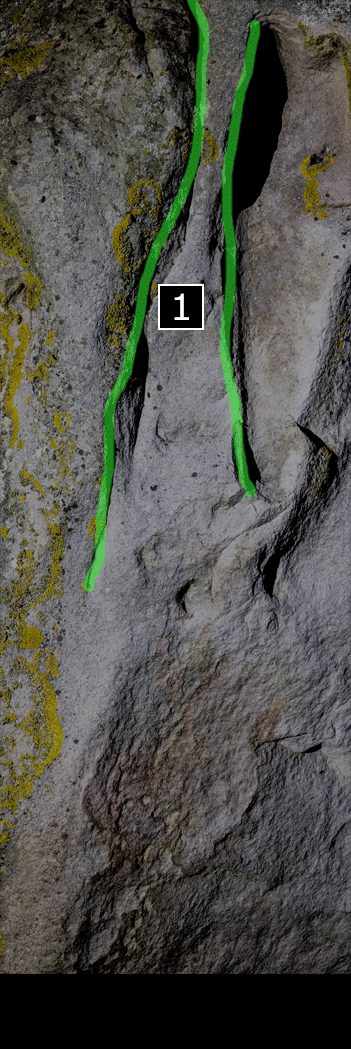Explanatory Materials Appear Below This Image - Please Scroll Down To View
There are other carvings of cattle at Avebury, click here to view them

 |
1. The sculptor found a pair of natural parallel clefts in the rock and created a bovine head at their base to fit these natural horns. A similar thought process can be discerned in relation to the fainter, cruder animal head at the base of the Swindon Diamond Stone's south elevation (here). 2. The jawline and neck of the beast were created by removing a broad area of the sarsen's surface. 3. The flat muzzle area was created by patient "pecking", a technique which is allegedly unique, in England at least, to Stonehenge, but is in fact visible in multiple Avebury carvings like 26a WKA, visible here. I can't help noticing that the muzzle here on our Barber Stone friend looks a little redder than the surrounding rock, could this mean that the original stone was judiciously treated with fire to make the rock easier to carve? - a process with consequent discolouration described in Di Pattison's book at page 28 as "fire scaling"? The reddening doesn't appear to extend into the lower layers of the sarsen else we could see the colour extend into area 2, this would suggest the fire was applied to what was to become the lower part of the animal's before any carving took place. 4. This elongated shape certainly looks like a tongue, but conceivably could also represent the breath of life, or even speech? A similar appendage can be seen on the horned, crescent face on Cove Stone I, visible here. 5. The face sports a pair of charming side-by-side nostrils, as if seen in cubist perspective. This way of representing a nose can be seen on the giant profiled face on the right side of the Swindon Diamond Stone's south elevation (here).
|
![]()
Image copyright David Baldwin Night Photography